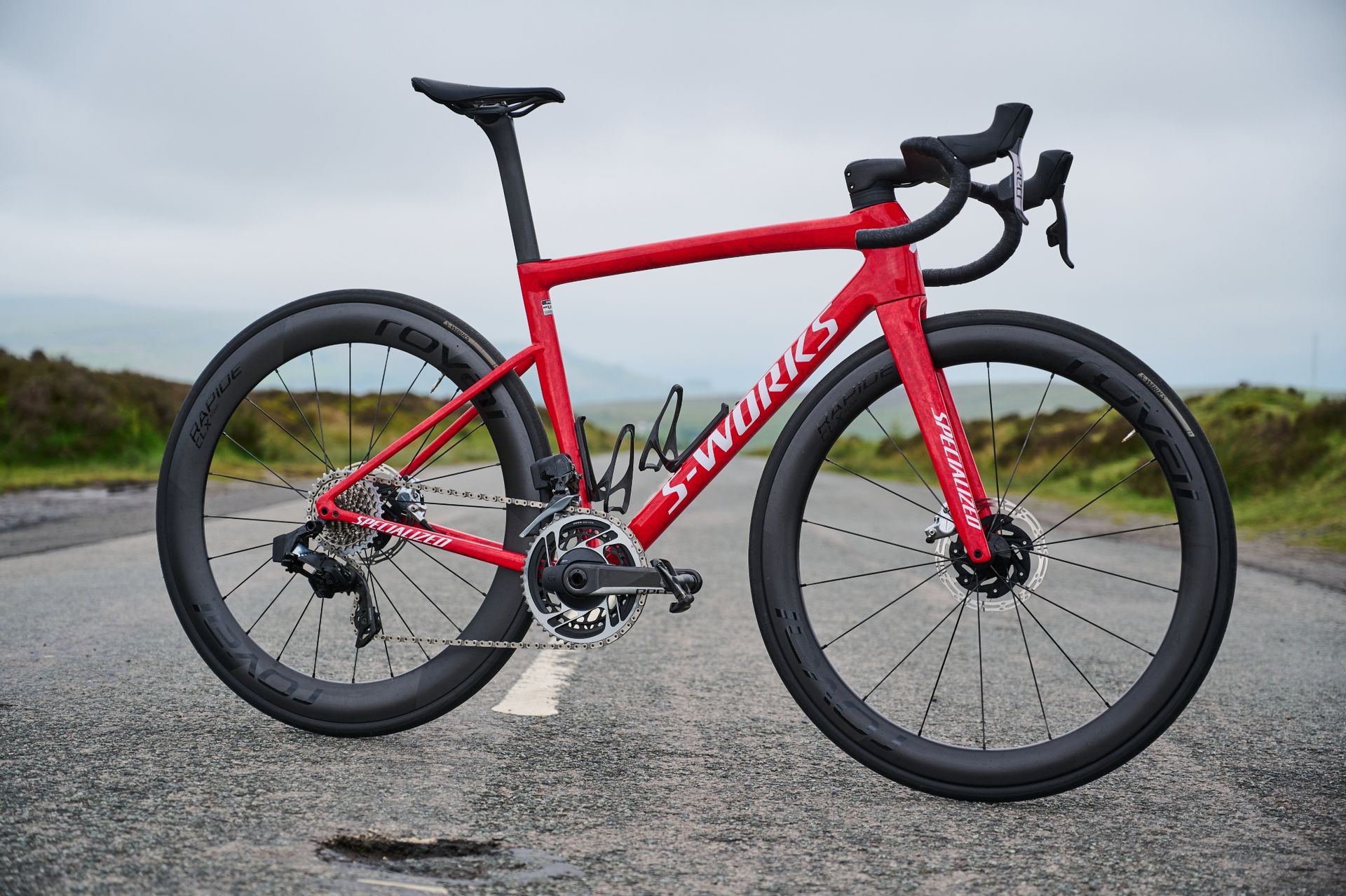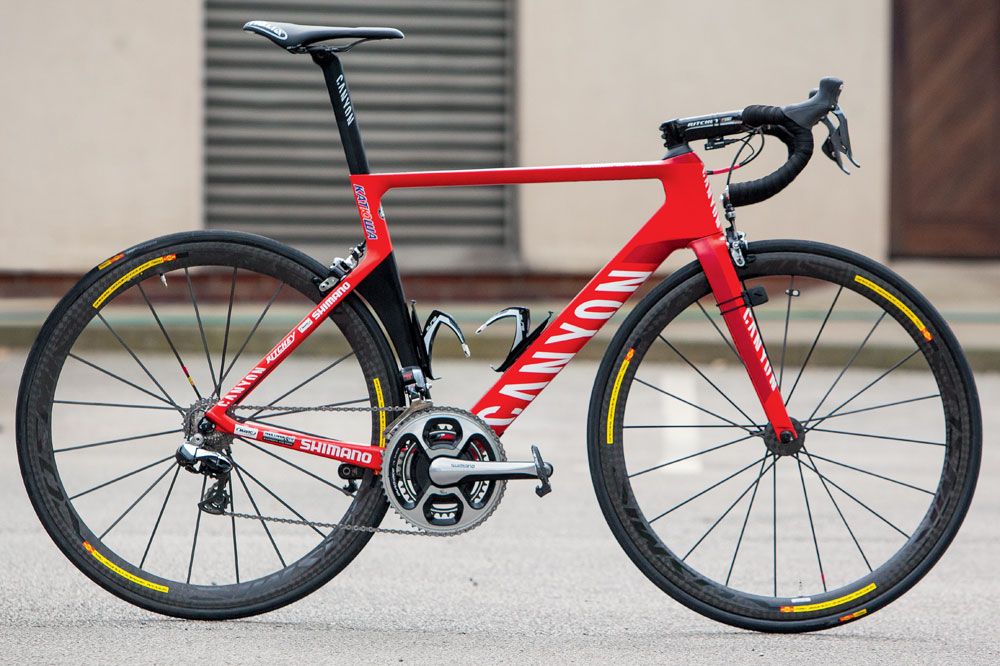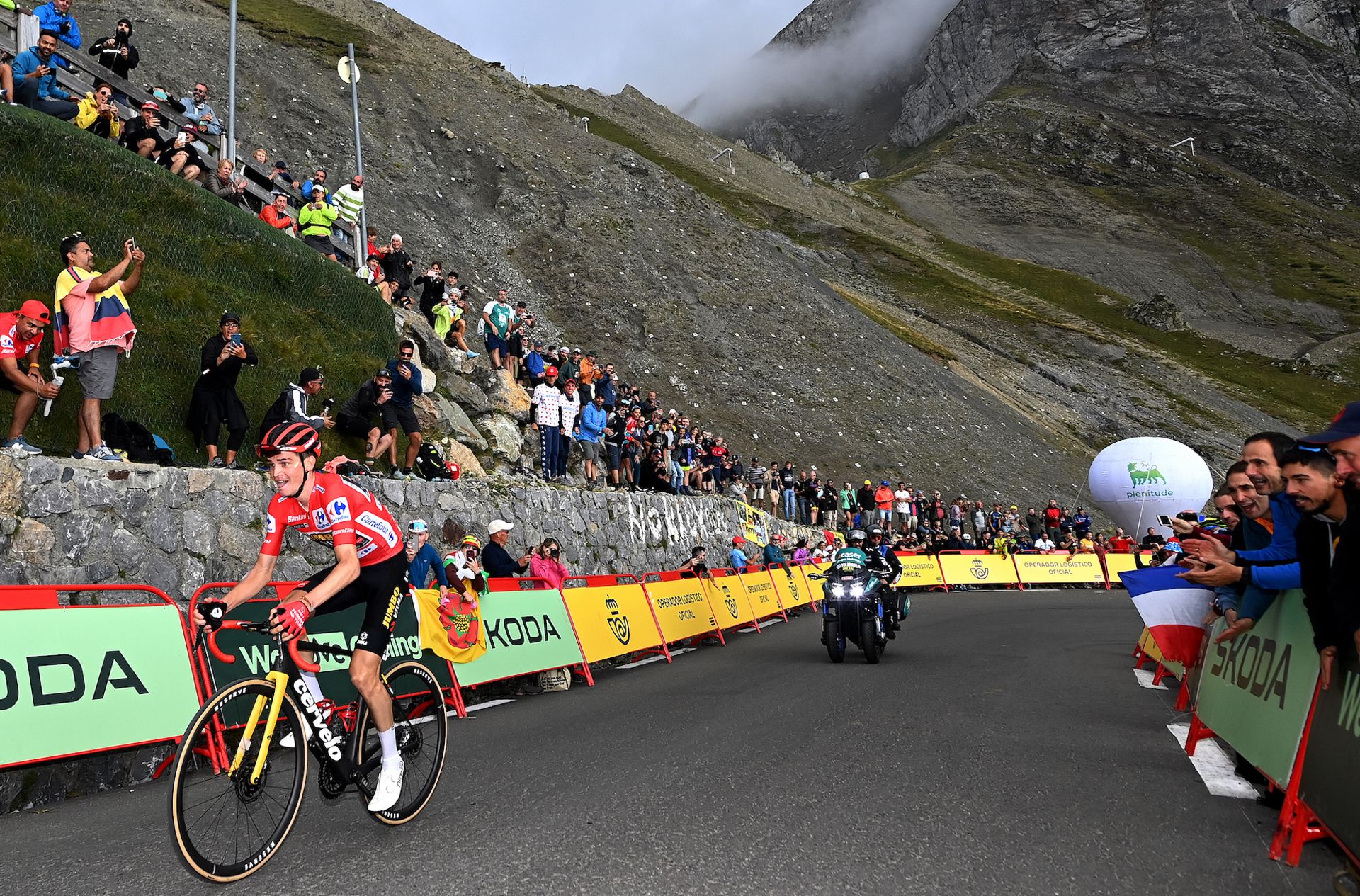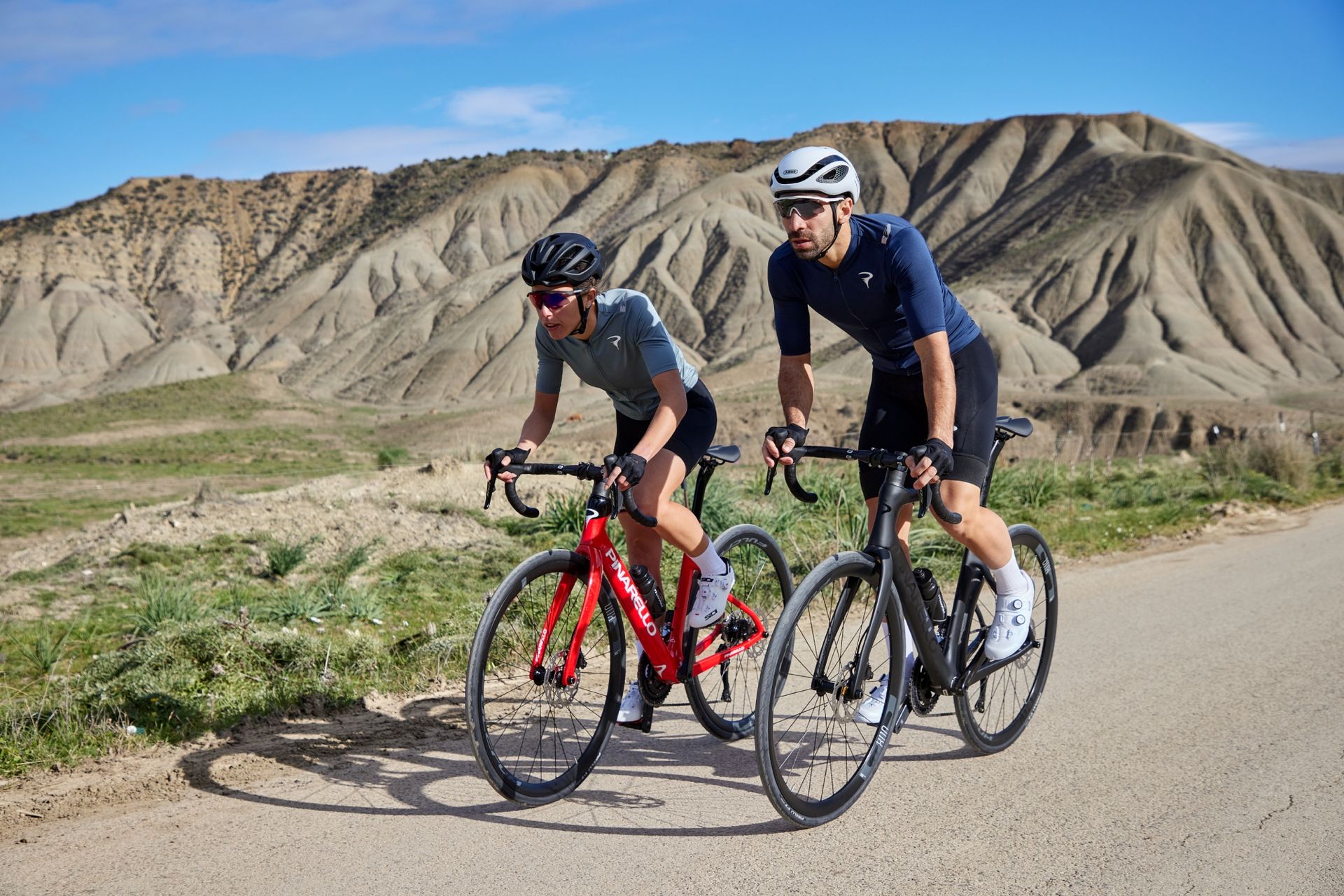Modern day aero bikes are looking 'less aero' - are they really faster, or is marketing just getting better?
We talk to brands and experts to establish why slender frame tubes are suddenly de rigueur


Not too long ago, it was standard for every bike brand's race line-up to include an aero bike, a climbing bike, and a 'somewhere-in-between' chassis. But in recent years, there's been a resurgence of the 'do it all' machine.
Trek, Specialized, Lapierre, and many others have prioritised a singular race bike encompassing aero features whilst edging close to - or creeping under - the UCI’s minimum weight limit of 6.8kg by merit, often, of slimmer tubing. These tube profiles appear to undermine the 'wider is more aero' rule of thumb that was often prevalent in white papers published by the same brands; there’s certainly room for some cynicism here.
So, are bikes really faster than they were at the height of the aero specialist's popularity? What's driving this change, and, is it for the good of the cyclist?
Why has tubing become shallower again?
The most prominent example of shrinking - but apparently faster - tube profiles can be seen in the Specialized Tarmac SL8. The brand claimed that the bike "eclipsed the 2020 Venge as the most aerodynamic road bike we’ve [the brand] has ever made". When challenged at the launch event, Specialized conceded that "over 50%" of the savings compared to the old bike - with its charactaristically chunky tubes - were courtesy of the new Roval Rapide CLX Carbon Cockpit.
The new Tarmac SL8 is no slouch, even though it possesses rounder tubing than the now extinct Venge
Asked directly how slimmer tubes could be faster, Specialized’s Senior Engineering Manager Sebastien Servet told us that a lot of the change comes down to a greater understanding of aerodynamics, and, better testing.
"The use of shallower tube shapes in the design of aero bikes is the direct outcome of a better understanding of the airflow surrounding the bike and pedaling rider, in riding situation. Previous generations of aero bikes did not benefit from this knowledge," Servet said.
Expanding further, and comparing testing of the current Tarmac vs the 2020 Venge, Servet added: "There are two main aspects where testing protocols have changed. Firstly, the aerodynamics interaction between the bike and the pedaling rider is considered with a much greater fidelity, and secondly a much more accurate statistical spread of yaw angles is considered in the calculation of the overall aero performance."
So, where previously testing focused on the bike, now, it takes into account the rider - a factor that sibling title CyclingNews concluded had a dramatic impact on results when carrying out their own independent testing, with shallower tubed bikes performing better with riders aboard - as per the real world - than alone.
CyclingNews' own independent testing corroborates the comments from Specialized
A greater spread of yaw angles, representing wind direction, will also produce a more real-world understanding. Looking back on past methodology Servet said: "Testing without understanding the interaction between the bike and the pedaling rider creates an incomplete and in some ways irrelevant understanding of a bike’s true aero performance."
This greater appreciation of testing has resulted in a more data-led approach, according to Specialized. "The general approach was to use deep tube sections indistinctly, using the principle of 'the more the better. We’ve moved well beyond simply testing bikes or tube shapes without the impact of a pedaling rider," Servet said.
Can you even compare new bikes with old?
What comparing old and new technology does not tell us is whether one design theory is faster, or not, as Dr Xavier Disley, Director at Aerocoach - which manufactures its own kit and also offers aero testing - explains.
"[Asking if slimmer tubing is faster] is not dissimilar to the debate around whether or not disc brakes are more or less aero than rim brakes," explains Disley, "the problem is, is that you can't really compare the two because all the technology found on a disc brake bike is wildly superior to what can be found on rim brake bikes."
Expanding on the point, he says: “No one has put a comparable amount of funding into a rim brake bike that say the Trek Madone SL received, and therefore it’s hard to say whether or not rim brakes could be faster today. If you've taken that concept and run with it, maybe it could be more aero now compared to disc brake bikes.
“Because everyone has moved away from the concept [of aero tube shapes], engineers have therefore stopped developing a certain concept."
Take this rim brake Canyon Aeroad for example - it doesn't even have an integrated cockpit
Therefore, it's possible that if the chunky tubes of old were combined with the updated components and features of newer bikes, we'd have a faster overall system.
So what is the money-no-object bike line up?
As a renowned producer of aero wheels, handlebars, and rider optimisation coach, it’s safe to say that Disley and the Aerocoach team know a thing or two when it comes to making bike racers fast - so I put the question to him, with an unlimited budget, to win at pro level, what bike would you design? In other words: can one bike ever be faster in all scenarios the road has to offer?
"If you had an unlimited budget, you would probably have three types of road bike for the team. You'd have a sprinter's bike, which would be wild and just focused on aerodynamics. And yes, you'd have to try and make it comfortable, but the use case would be very particular - everyone would be rolling along at 45/48kph on a flat stage, with a sprint finish where you just need a lower CdA [coefficient fo drag] than anyone else to win.
"Next up, you'd have a ‘do it all bike’ - something much more similar to the Tarmac SL8 for example. I would bias this bike a little more towards aero optimisation if I could, but still make it comfortable, and genuinely useable for long stages."
Completing the shopping list, he adds, "finally you'd have the pure climbing bike. This would be designed to be as light as possible, with as much stiffness in all the right places."
Often times the differences are still made on the steep gradients - but it depends on the race
The reasoning behind this comes down to where the differences are made in professional racing.
When a rider saves 3% of their power at 250 watts, an aerobic power zone for most professionals, the stress on the body may be far lower than saving 1% at 450 watts on the final climb of the day. The differences are marginal, perhaps, and not discernible to the average amateur. But, they could be the difference between winning or losing for the pros.
To take a cynical approach, the adoption of the do-it-all bike could be put down to a desire to reduce model count and therefore production costs, at a time where the cycling industry is battling the effects of overstocking during the Covid pandemic. Bike brands are businesses, after all, and a single bike that suits more users is cheaper to produce than a family of tailored machines.
Are modern bikes better for the masses?
We mere mortals, are of course, the people actually putting our hands in our pockets to pay for these bikes. So, even if Disley doesn't believe the 'do-it-all' is the absolute fastest option for the pros, is it still best for the consumer?
This is where the famous term 'ride quality' comes in, and for me, it's the ultimate justification.
"Generally, moving away from deep tube sections has a positive impact on weight by reducing the overall surface area of the bike components - less surface area is less material, thus less weight. This weight reduction contributes to better ride characteristics - the bike feels nimbler," said Servet.
"More particularly, when the move away from deep tube shapes allows the tube to have a more circular cross-section, such as on the down tube, the effect on stiffness, weight and ride characteristics is extremely positive. These gains translate directly and measurably into an improved ride feel."
Whilst there will always be individuals who hold speed above all other characteristics, I'm inclined to agree that a lighter, more comfortable bike is better for the majority. It may even be faster, by nature of being more enjoyable to ride.
The bikes of today, with wider tyre clearance and more frame technology aimed at improving comfort are certainly a move in the right direction for the consumer. They're also not slow either, or at least I struggle finding the limits of modern day super bikes with my legs.
Whether they are the absolute fastest machines the industry is capable of making today is another question, but for a bike to sell, it must be practical too.

Thank you for reading 20 articles this month* Join now for unlimited access
Enjoy your first month for just £1 / $1 / €1
*Read 5 free articles per month without a subscription

Join now for unlimited access
Try first month for just £1 / $1 / €1
Get The Leadout Newsletter
The latest race content, interviews, features, reviews and expert buying guides, direct to your inbox!

Joe is Cycling Weekly's tech writer. He's always had a love for bikes, since first riding a two wheeled steed before the age of four. Years down the line, Joe began racing at 16, and enjoyed great experiences internationally, racing in Italy, Spain and Belgium to name a few locations. Always interested in tech, Joe even piloted his Frankenstein hill climb bike to a Junior National Title in 2018. After taking a step back from elite level racing in April 2022, Joe joined our team as a freelancer, before becoming Tech Writer in May 2023.
-
One domestic road race can produce equivalent emissions to flying from London to New York and back, twice: the why and how of more sustainable events
Sustainability specialist and road race organiser Travis Bramley set out to discover if his love for cycling could align with his commitment to the environment. Here’s what he found
By Travis Bramley Published
-
 Is Mathieu van der Poel winning races “in zone 2” helping or hindering cyclo-cross?
Is Mathieu van der Poel winning races “in zone 2” helping or hindering cyclo-cross?The Dutch world champion has turned up off-road now, and immediately won twice. Is this fun?
By Adam Becket Published





